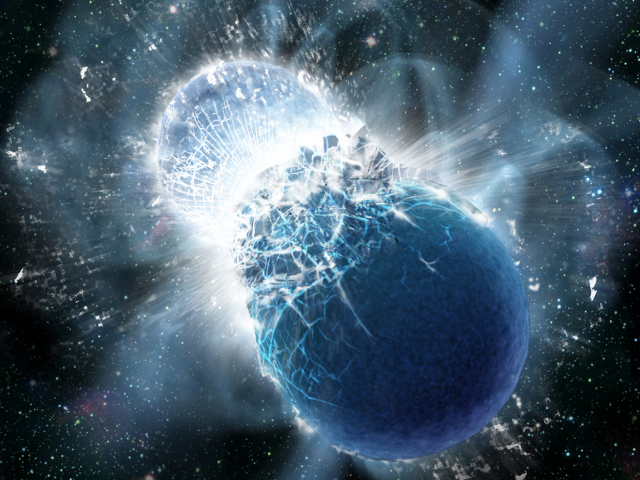Making heavy elements by colliding neutron stars
Ars Technica » Scientific Method 2013-07-18

Most chemical elements heavier than helium were born in the death throes of stars; the explosive energy of a supernova is responsible for generating most of the contents of the periodic table. Now, a new observation hints that another type of explosion—caused by the collision of two neutron stars—could be responsible for the production of many heavy nuclei, including gold.
Astronomers at the Harvard-Smithsonian Center for Astrophysics identified a red point of light at the same location as a powerful explosion known as a short duration gamma-ray burst. This is the first identification of an optical counterpart to this type of gamma-ray burst, and it could be the signature of new neutron-rich elements being produced in the aftermath of the explosion. If that conclusion is correct, then this observation is powerful support for the idea that colliding neutron stars are responsible for many gamma-ray bursts and the origin of some heavy elements.
As their name suggests, gamma-ray bursts (GRBs) are intense sources of gamma rays that peak, then fade on a timescale that depends on the event produced them. Long-duration GRBs are currently thought to be particularly energetic supernovae, or hypernovae, since they occur in regions of vigorous star formation. Short-duration GRBs, on the other hand, happen in galaxies containing old stars or other regions lacking the high-mass stars that go supernova. Additionally, no supernova explosion has yet been observed at the location of a short-duration GRB, indicating that something else is at work.
Read 8 remaining paragraphs | Comments




